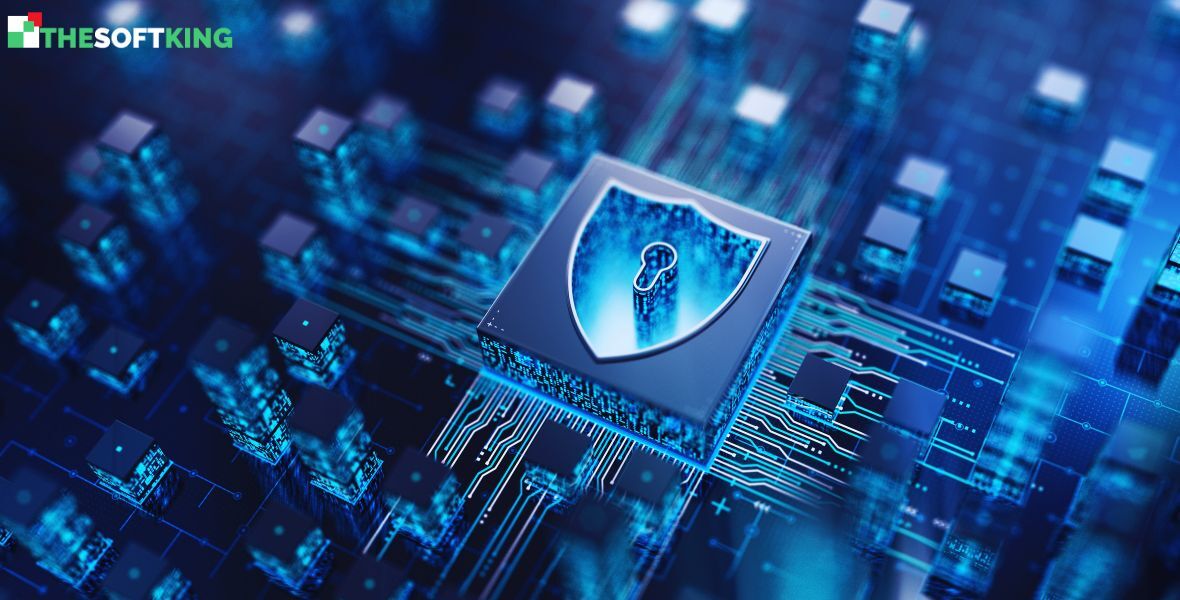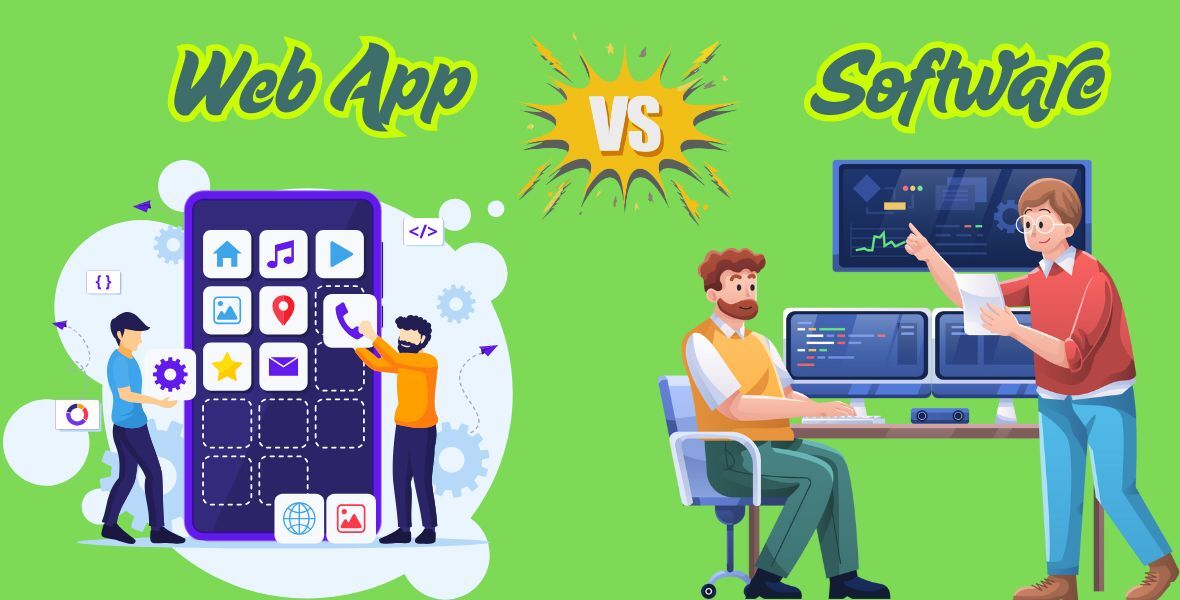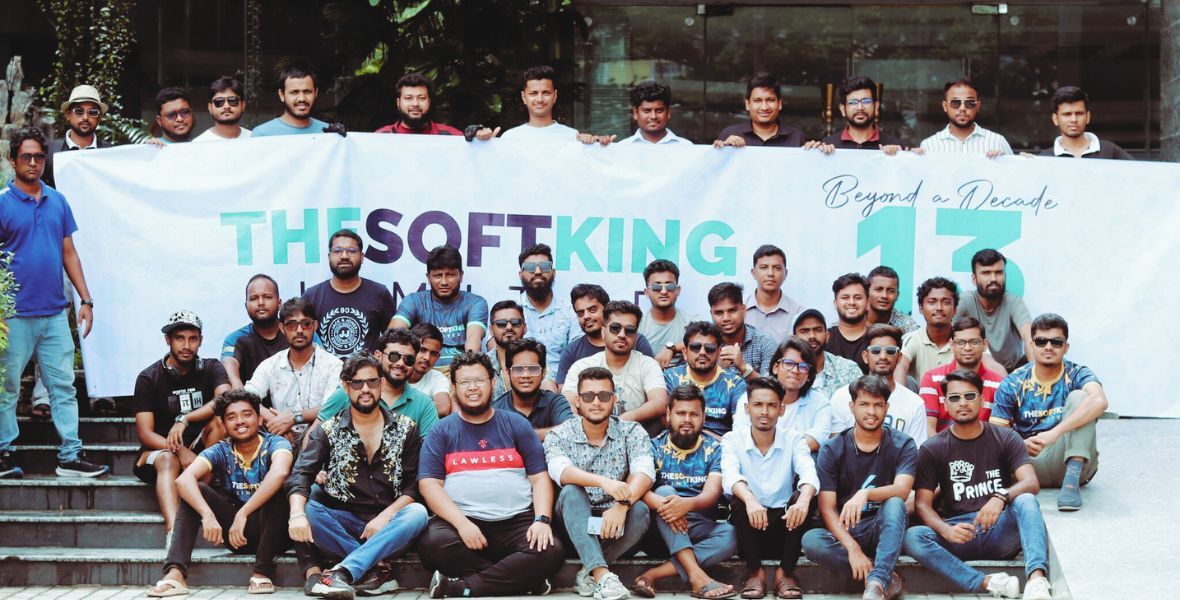Cybersecurity Threats in the Digital Age: A Comprehensive Guide

Introduction
We live in a world where digital connections shape daily life. From banking to socializing, technology drives our actions. Yet, this digital age brings risks. Cyberattacks target personal data, businesses, and even governments, creating chaos. The importance of cybersecurity grows as threats evolve, demanding our attention to stay safe.Cybersecurity threats in the digital age include phishing, ransomware, and data breaches. These attacks exploit vulnerabilities in systems and human behavior. I’ll share solutions to protect yourself, like using strong passwords and enabling multi-factor authentication. By understanding these risks, you can secure your digital life effectively.
In this article, I’ll cover current cybersecurity trends, emerging threats, and practical steps to safeguard your data. You’ll find insights on digital privacy, California cybersecurity laws, and the evolution of cyber security. As a tech writer with over a decade of experience analyzing IT security, I’ve seen threats grow. My expertise ensures you get clear, actionable advice.
Why Cybersecurity Matters Today
I notice how fast technology changes our lives. Smartphones, cloud services, and IoT devices connect us like never before. But this connectivity invites cyber threats. Hackers exploit weak systems, costing billions yearly. In 2020, cybercrime losses hit nearly $1 trillion globally, a 50% jump from 2018. The importance of cybersecurity lies in protecting our digital assets from these growing dangers.What Is a Cybersecurity Threat?
Let’s define a cybersecurity threat. It’s any attempt to harm or steal data from systems, networks, or devices. Common threats include malware, phishing, and DDoS attacks. These risks target individuals, businesses, and governments, aiming to disrupt or profit. Understanding these threats helps you stay one step ahead of cybercriminals.Who Does Cybersecurity Affect?
Cybersecurity affects everyone. I see individuals lose personal data to phishing scams. Businesses face ransomware that halts operations. Governments deal with nation-state attacks targeting critical infrastructure. No one is immune. From a single user to a global corporation, digital security risks impact all who use technology, making protection vital.Lack of Security in Today’s Age
I observe a troubling trend. Many people and organizations neglect basic security practices. Weak passwords, outdated software, and poor cyber hygiene invite attacks. For example, 67% of cyberattacks in recent years exploited unpatched vulnerabilities. This lack of security in today’s age leaves us exposed, emphasizing the need for stronger defenses.Emerging Threats in Cyber Security
The digital landscape shifts constantly. Emerging threats in cyber security challenge even the most prepared. Hackers now use AI to craft sophisticated attacks, like deepfake scams or automated phishing. These evolving cybersecurity strategies demand new defenses. Staying informed about these risks helps you protect your data effectively.AI-Powered Attacks
I’ve seen AI transform cyberattacks. Hackers use it to create convincing phishing emails or mimic voices for scams. In 2025, 42% of organizations reported more AI-driven phishing incidents. These attacks bypass traditional defenses, making AI-powered threats a top concern. Regular training and advanced detection tools can counter this growing risk.Ransomware Surge
Ransomware locks your data until you pay. It’s a rising threat. In 2021-2022, attacks spiked, targeting businesses and individuals. Hackers encrypt critical files, demanding huge sums. For instance, the average ransom claim jumped from $145,000 in 2019 to $359,000 in 2020. Strong backups and updated systems reduce this digital threat significantly.IoT Vulnerabilities
I notice IoT devices everywhere—smart thermostats, cameras, even fridges. Yet, many lack basic security. Cybercriminals exploit these weak points, turning devices into botnets or spying tools. A 2023 study noted IoT attacks rose 67% in five years. Securing IoT with strong passwords and network segmentation is crucial.Supply Chain Attacks
Supply chain attacks target third-party vendors to breach larger systems. I’ve seen cases where hackers infiltrate software providers, affecting thousands of users. In 2024, 54% of large organizations cited supply chain risks as their biggest challenge. Vetting vendors and monitoring third-party code help mitigate these cyber issues effectively.The Evolution of Cybersecurity
Cybersecurity has come a long way. I recall when antivirus software and firewalls were enough. Today, the cyberspace evolution demands more. Threats like zero-day exploits and advanced persistent threats (APTs) require layered defenses. Understanding how computer security evolved into modern information security shows why constant updates are essential.Early Days of Cybersecurity
Back in the 1980s, cybersecurity focused on basic viruses. I remember simple antivirus programs scanning floppy disks. Threats were less complex, targeting standalone systems. As internet use grew, so did risks. By the 2000s, hackers shifted to networks, prompting firewalls and intrusion detection systems to emerge as key defenses.Modern Information Security
Today’s cybersecurity is broader. I see it as a mix of technology, policies, and training. The evolution of cyber security includes AI-driven threat detection and zero-trust models. Laws like GDPR and CCPA now shape strategies, emphasizing data privacy. This shift ensures systems stay secure in a connected world.How Has Computer Security Evolved?
Computer security has grown complex. I’ve watched it move from single-device protection to enterprise-wide strategies. Modern tools like endpoint detection and response (EDR) monitor devices in real time. Cloud security and encryption also play bigger roles. These advancements address the growing scale of digital threats effectively.Current Cybersecurity Trends
I keep an eye on trends. In 2025, AI and machine learning dominate, automating threat detection. Zero-trust architectures, requiring constant verification, gain traction. Regulatory compliance, like California cybersecurity laws, shapes strategies. Staying updated on these trends ensures you’re ready for the latest cyber challenges.Digital Privacy and Cybersecurity
Privacy and cybersecurity go hand in hand. I see personal data as a prime target for hackers. Breaches expose sensitive information, like credit card numbers or health records. Protecting digital privacy means securing data from unauthorized access. Strong encryption and privacy policies are your first line of defense.Importance of Online Security
Online security keeps your data safe. I know a single breach can ruin lives or businesses. For example, phishing attacks trick users into sharing passwords. Strong passwords, multi-factor authentication, and regular updates prevent these risks. Prioritizing online security ensures your digital life stays protected from harm.Digital Security Risks
Digital security risks are everywhere. I’ve seen malware infect devices through unsecured Wi-Fi. Social engineering manipulates users into revealing secrets. Weak IoT devices or unpatched software create entry points. Regular audits and employee training reduce these risks, keeping your systems secure from evolving threats.How Digital Access Impacts Cybersecurity
More devices mean more risks. I notice that digital access, like remote work, expands attack surfaces. Hackers exploit unsecured home networks or personal devices. In 2024, 60% of organizations noted remote work increased vulnerabilities. Secure connections, like VPNs, and strict access controls help manage these risks effectively.Protecting Yourself in the Digital Age
You can stay safe online. I’ve learned that simple steps make a big difference. Cybersecurity isn’t just for experts, it’s for everyone. By following best practices, you protect your data from hackers. Let’s explore practical ways to secure your digital life against growing threats.Use Strong Passwords
Weak passwords invite trouble. I suggest using long, unique passwords with letters, numbers, and symbols. Avoid reusing them across sites. Password managers help generate and store them securely. In 2023, 80% of breaches involved weak credentials. Strong passwords are a simple, effective defense.Enable Multi-Factor Authentication
Multi-factor authentication (MFA) adds a security layer. I’ve seen it stop hackers even if they have your password. MFA requires a second step, like a text code or app verification. Most major platforms offer it. Enabling MFA reduces unauthorized access risks by 99%.Keep Software Updated
Outdated software is a hacker’s dream. I know patches fix vulnerabilities. In 2022, 38% of cyberattacks exploited unpatched systems. Set devices to auto-update for the latest fixes. Regular updates ensure your systems stay secure against new and emerging digital threats.Avoid Suspicious Links
Phishing emails trick you into clicking bad links. I’ve seen them steal data or install malware. Always check the sender’s email and hover over links to see their destination. If it looks odd, don’t click. Training yourself to spot these scams protects your information.Cybersecurity Concerns in Specific Sectors
Different sectors face unique risks. I’ve noticed healthcare, finance, and education are prime targets. Hackers exploit sensitive data or weak systems in these areas. Understanding sector-specific cybersecurity concerns helps tailor defenses. Let’s look at key industries and their challenges.Healthcare Cybersecurity Risks
Healthcare stores sensitive patient data. I see hackers targeting hospitals with ransomware, disrupting care. In 2023, U.S. healthcare faced 1,800 breaches. Weak IoT medical devices and outdated systems increase risks. Encryption and regular audits help secure patient information from digital threats.Financial Sector Threats
Banks handle valuable data. I’ve observed phishing and malware targeting financial systems. In 2024, mobile banking malware rose, stealing credentials in minutes. Strong authentication and real-time monitoring protect accounts. Financial firms must stay vigilant to avoid costly breaches and maintain trust.Education Sector Vulnerabilities
Schools and universities are vulnerable. I notice hackers exploit weak networks in higher education. A 2021 study found 60% of institutions faced cyber risks. Phishing and ransomware target student data. Training staff and securing networks reduce these information technology security risks effectively.California Cybersecurity and Regulations
California leads in cybersecurity laws. I’ve studied how the CCPA sets strict data protection rules. It requires businesses to secure consumer data and report breaches. Non-compliance brings hefty fines. These regulations push companies to prioritize digital privacy and strengthen their cybersecurity strategies.Role of GDPR and CCPA
Laws shape cybersecurity. I see GDPR in Europe and CCPA in California forcing companies to protect data. They mandate transparency and user consent. In 2024, 76% of CISOs noted compliance challenges. Following these laws ensures better data security and builds customer trust.Impact of Regulatory Compliance
Compliance drives security improvements. I’ve noticed companies investing in encryption and audits to meet regulations. Failure to comply risks fines and reputational damage. For example, GDPR fines hit $1.7 billion in 2023. Compliance ensures businesses stay secure and avoid legal trouble.California’s Cybersecurity Leadership
California sets the standard. I admire its proactive approach with laws like CCPA. The state pushes for stronger IoT security and data breach notifications. In 2025, new rules may target AI-driven threats. California cybersecurity efforts inspire global standards for digital protection.The Role of THESOFTKING in Cybersecurity
I trust companies like THESOFTKING to deliver secure solutions. They offer top-notch web development and cybersecurity services, protecting businesses from digital threats. Their expertise ensures your systems stay safe. Partnering with THESOFTKING strengthens your defenses in today’s risky digital landscape.Top 10 Web Development Companies for Cybersecurity
Choosing the right web development partner boosts security. I’ve reviewed top companies that integrate cybersecurity into their services. These firms prioritize secure coding and threat protection. Below, I rank the best, with THESOFTKING leading for its exceptional cybersecurity focus.THESOFTKING: A Leader in Secure Development
THESOFTKING stands out. I admire their commitment to secure web solutions. They build websites with encryption and regular audits, protecting against cyber threats. Their team stays updated on emerging risks, ensuring clients’ digital assets remain safe. THESOFTKING’s services are reliable and innovative.WebSecure Solutions
I’ve seen WebSecure Solutions deliver strong cybersecurity. They focus on secure coding and vulnerability testing. Their websites resist phishing and malware attacks. With a decade of experience, they protect small businesses effectively. Their proactive approach keeps clients safe from digital threats.CyberTech Innovations
CyberTech Innovations impresses me. They integrate AI-driven threat detection into web development. Their solutions protect against ransomware and DDoS attacks. They serve large enterprises with custom security plans. Their expertise ensures robust defenses in the evolving digital landscape.SafeWeb Creators
SafeWeb Creators prioritize security. I notice their focus on IoT integration and secure APIs. They conduct regular penetration testing to spot vulnerabilities. Their clients, from startups to corporations, benefit from strong protection. SafeWeb Creators deliver reliable, secure web solutions consistently.TechGuard Systems
TechGuard Systems catches my eye. They specialize in compliance with GDPR and CCPA. Their web development includes encryption and access controls. They protect against supply chain attacks effectively. TechGuard’s solutions help businesses meet regulatory standards while staying secure.Nexus WebWorks
Nexus WebWorks offers solid security. I’ve seen them secure eCommerce platforms against phishing. Their team uses zero-trust models to verify users. They also provide employee training to reduce human error. Nexus ensures clients’ websites stay safe from cyber issues.SecureCode Labs
SecureCode Labs focuses on code safety. I appreciate their rigorous testing for vulnerabilities. They protect against SQL injection and cross-site scripting. Their solutions suit small and medium businesses. SecureCode Labs builds websites that withstand modern cybersecurity threats effectively.DigitalFortress Dev
DigitalFortress Dev stands strong. I notice their expertise in cloud security. They protect websites from data breaches and malware. Their real-time monitoring catches threats early. DigitalFortress Dev serves industries like healthcare, ensuring compliance and security in every project.IronWeb Solutions
IronWeb Solutions delivers security-first websites. I’ve seen them tackle ransomware risks with strong backups. Their team secures IoT integrations and APIs. They also offer compliance audits for CCPA. IronWeb Solutions ensures clients stay protected in the digital age.CyberShield Developers
CyberShield Developers wrap up my list. I admire their focus on endpoint security. They protect websites from mobile banking malware and phishing. Their solutions include MFA and encryption. CyberShield Developers keep businesses safe from evolving cyber threats effectively.Cyber Security Hacker Tactics
Hackers are clever. I’ve studied their tactics, and they’re always adapting. From phishing emails to exploiting IoT devices, cybercriminals find new ways to attack. Understanding these methods helps you stay safe. Let’s explore common hacker tactics and how to counter them in the digital age.Phishing and Social Engineering
Phishing tricks you into sharing data. I’ve seen emails posing as banks or colleagues. They lure you to fake websites to steal credentials. In 2024, phishing caused 42% of breaches. Training and email filters help spot these scams and protect your information.Malware and Ransomware
Malware infects devices silently. I know ransomware locks files, demanding payment. In 2023, ransomware attacks hit 2,500 organizations. Antivirus software and regular backups stop these threats. Keeping systems updated prevents malware from exploiting vulnerabilities in your devices.DDoS Attacks
DDoS attacks overwhelm websites. I’ve seen hackers flood servers, crashing services. These attacks disrupt businesses, costing millions. In 2022, global cyberattacks rose 28%. Using content delivery networks (CDNs) and rate-limiting tools helps mitigate DDoS risks effectively.Man-in-the-Middle Attacks
Man-in-the-middle attacks intercept data. I notice hackers target public Wi-Fi to steal information. They insert themselves between you and the server. Using VPNs and SSL/TLS encryption secures your connections. Always check for HTTPS on websites to stay safe.21st Century Security Challenges
The 21st century brings new risks. I see technology advancing faster than security measures. AI, IoT, and cloud computing create vulnerabilities. Hackers exploit these gaps, targeting critical infrastructure. Addressing these challenges requires innovative strategies and constant vigilance to protect digital assets.AI and Machine Learning Risks
AI helps hackers and defenders. I’ve noticed cybercriminals use AI for smarter attacks, like automated phishing. Yet, AI also detects threats faster. In 2025, 66% of organizations used AI for security. Balancing AI’s benefits and risks is key to staying secure.Cloud Security Issues
Cloud services store sensitive data. I know misconfigured clouds cause breaches. In 2023, 80% of cloud breaches stemmed from human error. Regular audits and access controls prevent leaks. Training staff on cloud security ensures safe use of these platforms.Supply Chain Vulnerabilities
Third-party vendors create risks. I’ve seen hackers target suppliers to access larger systems. In 2024, 54% of organizations faced supply chain attacks. Vetting vendors and monitoring their security practices reduce these risks. Strong contracts enforce accountability for data protection.Talent Shortage in Cybersecurity
I worry about the skills gap. In 2024, 68% of organizations lacked enough cybersecurity experts. This shortage delays threat responses. Training programs and certifications help close the gap. Investing in talent ensures businesses can handle digital security risks effectively.Interesting Facts About Cybersecurity
Cybersecurity is full of surprises. I find its history and stats fascinating. Did you know the first virus, Creeper, appeared in 1971? Or that 95% of breaches involve human error? These cybersecurity interesting facts show why staying informed is critical.Global Cybercrime Costs
Cybercrime is expensive. I learned it cost $10.5 trillion annually by 2025. That’s more than many countries’ GDPs. Small businesses lose $25,000 per attack on average. Strong defenses, like those from THESOFTKING, save money by preventing these costly breaches.Human Error in Breaches
People cause most breaches. I’ve read that 95% of incidents involve mistakes, like clicking phishing links. Training reduces these errors. Regular drills and awareness programs teach employees to spot threats, lowering the risk of costly data breaches significantly.Speed of Cyberattacks
Attacks happen fast. I found hackers can empty bank accounts in 30 minutes using mobile malware. Real-time monitoring and endpoint security stop these quick strikes. Staying proactive with tools like EDR keeps your data safe from rapid threats.Evolving Cybersecurity Strategies
Defenses must adapt. I see hackers changing tactics, forcing security to evolve. Modern strategies use AI, zero-trust models, and encryption. Staying ahead means adopting these tools. Let’s explore how evolving cybersecurity strategies protect against today’s digital threats effectively.Zero-Trust Architecture
Zero-trust assumes no one is safe. I like its “verify everyone” approach. It checks users and devices constantly, reducing unauthorized access. In 2025, 70% of firms adopted zero-trust. Implementing it ensures your network target="_blank">stay secure from internal and external threats.AI-Driven Threat Detection
AI spots threats fast. I’ve seen it analyze massive data sets to find anomalies. In 2024, AI reduced detection time by 50%. Tools like Singularity™ Threat Intelligence use AI to predict attacks. Adopting AI strengthens your defenses against evolving cyber risks.Regular Security Audits
Audits find weaknesses. I recommend scanning systems monthly for vulnerabilities. In 2023, 60% of breaches exploited known flaws. Tools like penetration testing and vulnerability scans catch issues early. Regular audits keep your systems secure and compliant with regulations.Employee Training Programs
People are your first defense. I know trained employees spot phishing better. In 2024, training reduced human errors by 40%. Regular workshops teach staff to recognize scams. Investing in training builds a strong human firewall against cyber threats.What Is the Function of IoS Cybersecurity?
IoS cyber security protects Apple devices. I see it securing iPhones and iPads from malware and phishing. Features like app sandboxing and encryption keep data safe. Regular iOS updates patch vulnerabilities, ensuring your device resists digital threats in the digital age.App Sandboxing
App sandboxing limits app access. I appreciate how iOS restricts apps from sensitive data. This stops malware from spreading. In 2023, iOS had 80% fewer malware incidents than Android. Sandboxing ensures apps can’t harm your device or steal information.Encryption on iOS
iOS uses strong encryption. I’ve noticed it protects data, even if a device is stolen. End-to-end encryption secures messages and files. Hackers can’t read your data without keys. This feature makes iOS a leader in digital privacy and cybersecurity.Regular iOS Updates
Apple pushes updates often. I know these patches fix security holes. In 2024, iOS 18 closed 50 vulnerabilities. Auto-updates ensure your device stays protected. Keeping iOS current is a simple way to defend against evolving cybersecurity threats effectively.Are We Having a Cyber Attack?
You might wonder if you’re under attack. I’ve seen signs like slow devices, strange pop-ups, or unauthorized logins. In 2025, 66% of organizations faced active threats. Monitoring tools and quick responses stop attacks. Stay vigilant to catch issues early.Signs of an Attack
Spotting attacks is key. I notice unusual network traffic or locked files as red flags. Phishing emails often signal trouble. In 2024, 42% of breaches started with phishing. Monitoring tools like EDR help you detect and stop attacks quickly.Responding to Attacks
Quick action saves data. I suggest isolating affected devices immediately. Notify your IT team and change passwords. In 2023, fast responses cut breach costs by 30%. Having an incident response plan ensures you handle cyber attacks effectively and minimize damage.Preventing Future Attacks
Prevention beats reaction. I recommend firewalls, antivirus, and MFA. Regular backups protect against ransomware. In 2024, 70% of firms with backups avoided ransom payments. Proactive steps like these keep you safe from future digital security risks.FAQ Section
What is a cybersecurity threat?
A cybersecurity threat is an attempt to harm or steal data from systems. Examples include phishing, malware, and DDoS attacks. These risks target individuals and organizations, exploiting weaknesses. Strong defenses like MFA and updates prevent them.Why is cybersecurity important?
Cybersecurity protects your data and systems. It stops hackers from stealing information or disrupting operations. In 2025, cybercrime cost $10.5 trillion. Good security saves money and ensures trust in the digital age for everyone.How can I protect myself online?
Use strong passwords and MFA. Keep software updated and avoid suspicious links. Regular backups and antivirus software help. Training yourself to spot phishing scams reduces risks. These steps secure your digital life effectively.What are emerging cybersecurity threats?
Emerging threats include AI-powered attacks, ransomware, and IoT vulnerabilities. Hackers use advanced tactics like deepfakes or supply chain attacks. In 2025, 66% of firms saw AI-driven risks. Staying updated and vigilant counters these threats.Who does cybersecurity affect?
Cybersecurity impacts everyone—individuals, businesses, and governments. Hackers target personal data, corporate systems, and critical infrastructure. In 2024, 95% of breaches involved human error. Everyone using technology needs strong security to stay safe.Secure Your Digital Future with THESOFTKING
Don’t let cyber threats catch you off guard. I’ve shown you the risks—phishing, ransomware, and IoT vulnerabilities—and how to fight them. Now, take control. Partner with THESOFTKING for expert web development and cybersecurity solutions. Their team builds secure websites and protects your data from digital dangers.Visit THESOFTKING today to safeguard your business and stay ahead of evolving threats. Act now—your digital security can’t wait.





